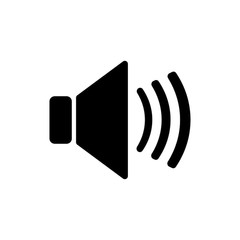
3.4. orale vowels
Orale vowels are vowels that use only the mouth as resonance body. You can test that by keeping your nose closed with your fingers and pronouce iiiiiiiiiiiiii, ooooooooooo, uuuuuuuuuuu etc. It doesen't make any difference whether you keep your nose close or not. The problem is, that there are no nasale vowels in English, therefore for some people the difference is not obvious. However you can try the same thing with oral consonants. Keep you nose closed with your fingers and say s, s, s, s or d, d, d, d. These are orale consonants and it doesn't make any difference whether you keep your nose open or not. Than try mmmmmmmmm and nnnnnnnnn. This a nasale consonants and in this case there is a big difference. A single m or n is still possible, because for a very short time you can park air in your nose. (Otherwise you were not able to speak if you had a cold.) However mmmmmmmmmm or nnnnnnnnnnn is not possible.
Obviously it is not completely impossible to pronounce orale vowels with the nose closed, but they sound different. Nasale vowels uses the mouth as a resonance body as well, but they use the nose as well. If it were completely impossible to produce nasale vowels, the French and Portuguese would fall silent in case of a wave of influenza, what is not the case, but the sounds sound different.
Whether the aire escapes completely through the mouth or completely through the nose or trough both of them depends on the position of the soft palate. (That's the little corner you see at the background of your mouth.) The m and the n are an exception. In this case it is the tongue that prevents the air from escaping through the mouth. Normally we are not aware that we can interrupt and open the connection between the mouth and nose with the soft palate, but it is obvious that we can do it, because otherwise we wouldn't be able to pronounce a t as in tea or d as in drink. We produce the t and the d by stowing the air in the mouth and let is escape suddenly. That wouldn't possible if the air could escape through the mouth and therefore it is clear that soft palate can interrupt the connection.Portuguese has 10 orale vowels. That is less than French, that has impressing 12 orale vowels, see www.French-online.de.
| IPA presentation | graphem | example | meaning |  |
| [a] | á | água | water | |
| [ɐ] | a | cama | bed | |
| [ɐ] | à | á | (a preposition + a article | |
| [ɐ] | â | ângulo | angle | |
| [ɑ] | a | alguém | anybody, somebody | |
| [e] | e | cena | stage | |
| [e] | ê | você | (polite form singular) you | |
| [ɛ] | é | café | coffee | |
| [ɘ] | e | de | of / from | |
| [i] | e | telefone (Br.) | phone | |
| [i] | i | livro | book | |
| [o] | o | novo | nee | |
| [o] | ô | avô | grandfather | |
| [ɔ] | o | porta | door | |
| [ɔ] | ó | avó | grandmother | |
| [u] | u | tudo | everything | |
| [u] | ú | útil | useful | |
It can be questioned whether the phonetic transcription is useful or not. The author would say it is sometimes useful, because it sensitizes. People who learn English as a foreign language don't hear the difference between the voiced th ð (mother) and the unvoiced th θ (think). In this case the phonetic transcription is helpful and sometimes clearer than a voice example.
However as far as vowels are concerned the situation is more complicated. Vowels don't have clear borders. Between the e in angel (this a is called an open e) and the e in energy there are a lot of sounds in between and the realisation of this sounds can vary a lot. Most of the discussions on the internent about the "best" pronunciation, between native speakers, are about vowels and very seldom about consonants, that have clear borders. The phonetic transcription take a certain standard as an ideal. (Germans for instance discuss a lot about the correct pronunciation of the i and italians have a big discussion about the e and the o, in Portuguese there is sometimes a discussion whether the o should be pronounced open or closed.)
In the next chapters we will study these oral vowels more in detail with phonetic transcription and sound examples.
| contact privacy statement imprint |